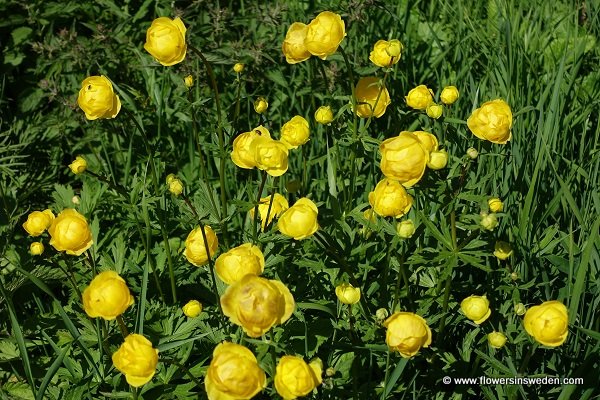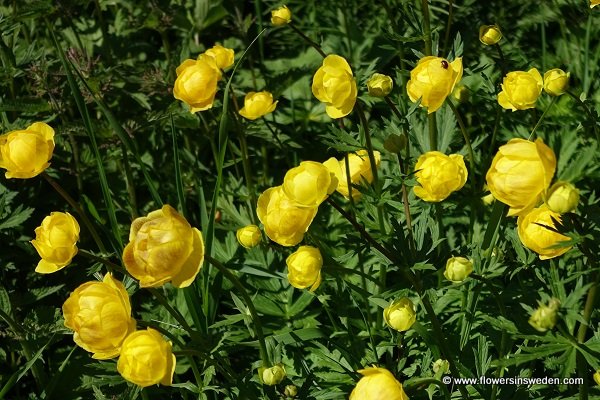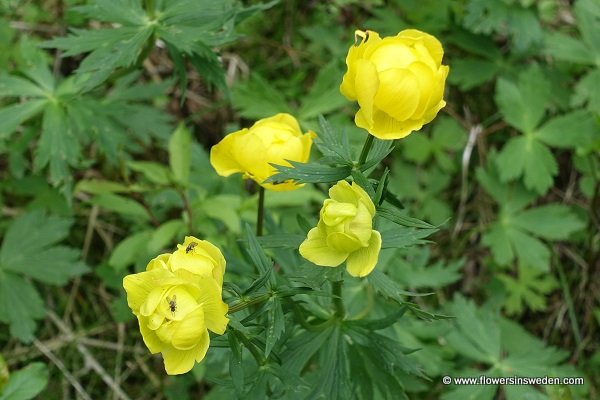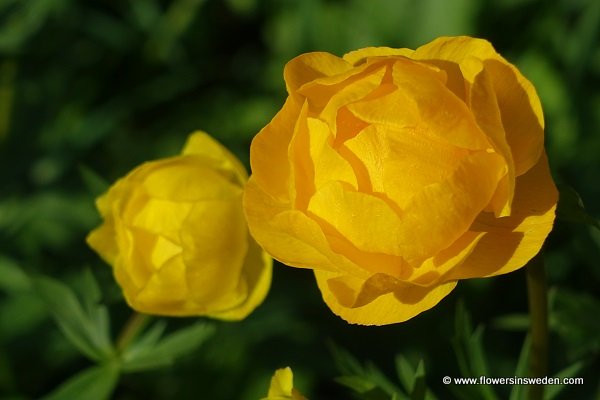|
|
| Life form: |
| Perennial herb |
| Stems: |
| Height up to 60 cm, erect, unbranched |
| Leaves: |
| Alternate, basal leaves long-stalked, stem leaves short-stalked–stalkless; basal leaf blades roundish, usually deeply 5-lobed, lobes pinnatifid–large-toothed; stem leaf blades smaller and with narrower lobes |
| Flowers: |
| Solitary or as 2–3-flower cymes; yellow ball-shaped flower up to 3 cm across |
| Flowering Period: |
| May-June |
| Fruits: |
| Follicle contains many shiny black seeds |
| Habitat: |
| Damp soils and is more common in calcareous soils |
| Distribution: |
| North and most common in the mountain regions, but occur rarely down in Skåne. The species is missing in Gotland. |

Derivation of the botanical name:
Trollius, first used by the German Gesner in 1542, the name was formed after the German name Troll Blume.
europaeus Latinising of Europe.
- The standard author abbreviation L. is used to indicate Carl Linnaeus (1707 – 1778), a Swedish botanist, physician, and zoologist, the father of modern taxonomy.


|




